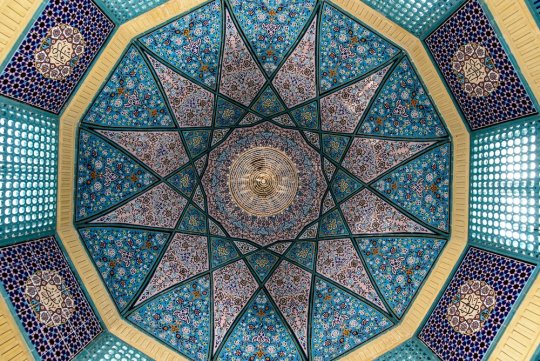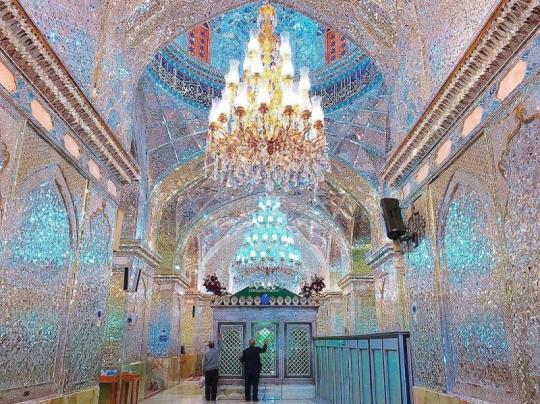#plays in madinat al nuhas
Explore tagged Tumblr posts
Text
Abominable Bog from The Unfathomable Sand Dunes Peijia You, HOYO-MiX
#genshin#genshin impact#the unfathomable sand dunes#sumeru#overworld#madinat al nuhas#plays in madinat al nuhas#peijia you
2 notes
·
View notes
Note
I played Kaveh's Hangout and I'm being haunted by him now 💀
Anyways I want to write Kirara but I already know I'll focus on her being a nekomata more than anything else xd
Also Comrade um.
I'm not being rude I hope but could you please tell me what some of the things in Sumeru are based off? I really want to know more :D
Kaveh's hangout was SO good one of the few hangouts that didn't bore me and it was better than even some of the story quests <3
You aren't being rude at all! There are so many things I don't know where to start lmao but the biggest thing I can think of is that Sumeru being a nation full of scholars is a reference to the islamic golden age where scholars would come to baghdad to seek knowledge.
Oh the topic of Kaveh, he is inspired by Kaveh the Blacksmith who is a famous persian (and kurdish) mythological character and is a symbol of resistance and unity against despotic foreign rulers in Iran. All of Kaveh's architecture designs (especially palace of alcazarzaray) have strong elements of persian architecture, and it's the same for the designs on his attacks! His constellations are also named after historical monuments is iran :3
Faruzan (whose name is inspired by the femine Foruzan and the masculine Farzan), there's also the term Firouzeh which is this beautiful turquoise that is seen in her character design color.

Her idle animations are a reference to the Persian Polymath Muhammad ibn Musa al-Khwarizmi, also known as the father of algebra. In her idle animation, when she's thinking if you decrypt it, this is what you'll get! All of it is a reference to "kitab al jabr and muqabla" written by Muhammad ibn Musa al-Khwarizmi himself.

And the dress she's wearing is a reference to persian architecture such as these, and the last picture is from a place called Shah Cheghrah, while her skirt style and shoes are from the Qajar period.



After her we have the man himself, Al-Haitham! He is inspired by the great iraqi mathematician, astronomer, and physicist Hasan ibn Al-Haytham from the Golden Age of Islam, and is also widely known as the father of optics!
Remember in the Archon quest when Alhaitham had to fake insanity? It's actually similar to something that happened to Hasan ibn Al-Haytham! He was invited by the cruel ruler Al-Hakim (later known as the Mad Caliph, I believe) to Egypt with a scheme to control the waters of the Nile, which is an impossible feat to do.
Although he failed to do what al-Hakim asked him to, he was still rewarded with an official government post. The more al-Hakim became more erratic, Ibn al-Haytham believed that his life would be in danger so he feigned madness to be relieved of his post!
Now on to al-Haitham's design. He has a few eye shaped deigns across his clothes which are again a reference to Ibn al-Haytham's study on optics. And his burst animation is showing light refelcting from mirrors, a reference to ibn Al-Haytham's research in light. His shoes are called babouche and worn by both men and women! Also, his name Alhaitham means "hawk", an animal that is seen as powerful figures in arabian cultures since they represents vitality and heroism, and the hawk is seen in his constellation!
Chinvat Ravine is persian and references Zoroastrianism, Ashavan Realm is sanskrit and means something along the lines of "forest with life", Ghanda Vil is a reference to hinduism and is inspired by Gandhamardan Hills located in India and is known for medicinal plants.
Mt. Damavand is a real mountain and it's considered the highest peak in Iran and Western Asia, and it's also important in folklore and mythology because it was the mythical place that was a prison to the three headed, three jawed and six eyed dragon Azhi Dahak.
A place inside the robot in the newest desert region is called Madinat-Al-Nuhas which is a reference to the Arabian the folktale city of brass!
Gate of Zulqarnain means gate of the two horned in arabic, and it's a reference to Dhu al-Qarnain who was a righteous king that travels to east and west and sets up a barrier between a certain people and Yajuj and Majuj (remember Wadi-al Majuj on the map? 😉).
House of Daena is a reference to the Grand Library of Baghdad, and Port Ormos refers to Port Hormuz that is set up on the Persian Gulf!
There are way too many are names but all of them are reference to religions/and languages!
Areas aside, the Dance of Sebzorous is based on the Iranian(and kurdish etc) New Year celebration called Newroz which celebrates the incoming of spring/life. And the dance that Nilou does is a Persian Court Dance! And her being thwarted by the Akademiya, thus "arts" being considered illegal and then her dancing in front of the Akademiya paint a picture of the current Iran where women dance in the streets in retaliation to the government. Nilou's ovarall character represents the struggles and oppression iranian women face from a government that seeks to discourage women pursuing arts and their passions.
Also remember Farris, the man who gave Yalda candies to children? He is inspired Amou Newroz (uncle Newroz) who gives candies to children. Yalda is also a term taken from the "night of Yalda" tradition which celebrated the longest night in winter (My family says 21/12 is Yalda night lol).
Moving on to the Khaverna of Good and Evil, Khvarena is a concept in Zoroastrianism and broadly emboies "glory" and "splendor". Pari is a term that quite literally means fairy in my language lolol. Anyways, Pari are originally creatures from Zoroastrianism. Originally, pari were considered as "witch" and "sorceress" but their role in mythology shifted completely in later times, and they were then considered was beautiful, feminine entities that are fundamentally good in nature.
Sorush (called so in New Persian) is a being of Yazata (divine being/creature) in Zoroastrianism and is one of the three guardians of Chinvat Ravine (bridge of judgement) along with Rashnu and Mihir. In Shahnameh, which is a collection of epic poems of Iranian mythology by the Persian poet Ferdowsi and retells man stories from Zoroastrian scripture, Sorush appears as a Pari (now benevolent creatures) to warn the Iranian king Siyamak about a calamity.
In the game, Sorush calls the Traveller Yasnapati. Yasna can be translated somewhat to "ritual", "sacrifice", and "worship". So Yasnapati in the Avestan language is "lord of ritual" which is a reference to the orginal scripture in which Sorush himself is callled "ritual lord". There are so many other things about the other Pari like Rashnu and Mihir and Zurvan but I think this has gotten pretty long enough 💀
But for funsies, Jar Jar is merely a reference to JarJar Binks from Star Wars lol.
Anyways, I hope this all helps! There are so many other things worth talking about, but I think this is enough for now lol
37 notes
·
View notes
Text
Shadow in Ruins from The Unfathomable Sand Dunes Ziyu Che, HOYO-MiX
#genshin#genshin impact#the unfathomable sand dunes#sumeru#overworld#madinat al-nuhas#plays in madinat al-nuhas#ziyu che
3 notes
·
View notes
Text
sumeru

All songs that play in Sumeru (see The Veluriyam Mirage here). Predominantly featured in the albums Forest of Jnana and Vidya (Dharma Forest) and The Unfathomable Sand Dunes (Great Red Sand).
All songs are tagged under #sumeru
by area (Dharma Forest)
Sumeru City | Avidya Forest | Dharma Forest (General) | Apam Woods | Ardravi Valley | Devantaka Mountain | Dev’s Cavern | Lost Nursery | Mawtiyima Forest | Vanarana
by locations of note (Dharma Forest)
The Akademiya | Caravan Ribat | Joururi Workshop | Pardis Dhyai | Port Ormos | Sanctuary of Surasthana | Tree of Dreams | Vimara Village

by area (Great Red Sand)
Great Red Sand (General) | Desert of Hadramaveth | Desert Oasis* | Desert Caves and Ruins** | Hypostyle Desert | Khaj-Nisut | Land of Lower Setekh | Land of Upper Setekh | Mt. Damavand | The Orchard of Pairidaeza
*Includes Sobek Oasis and Thamud Oasis **Includes areas under the entire Great Red Sand area except the Girdle of the Sands
by area (Girdle of the Sands)
Girdle of the Sands (general) | Asipattravana Swamp | Gate of Zulqarnain | Hills of Barsom | Madinat al-Nuhas | Tunagi Hollow | Vourukasha Oasis
by locations of note (Great Red Sand)
Aaru Village | Tanit Camps | Temple of Silence | Towers of Betrayal
other
Combat | Domains | Irminsul | Ruin Golem | The Withering
home
2 notes
·
View notes